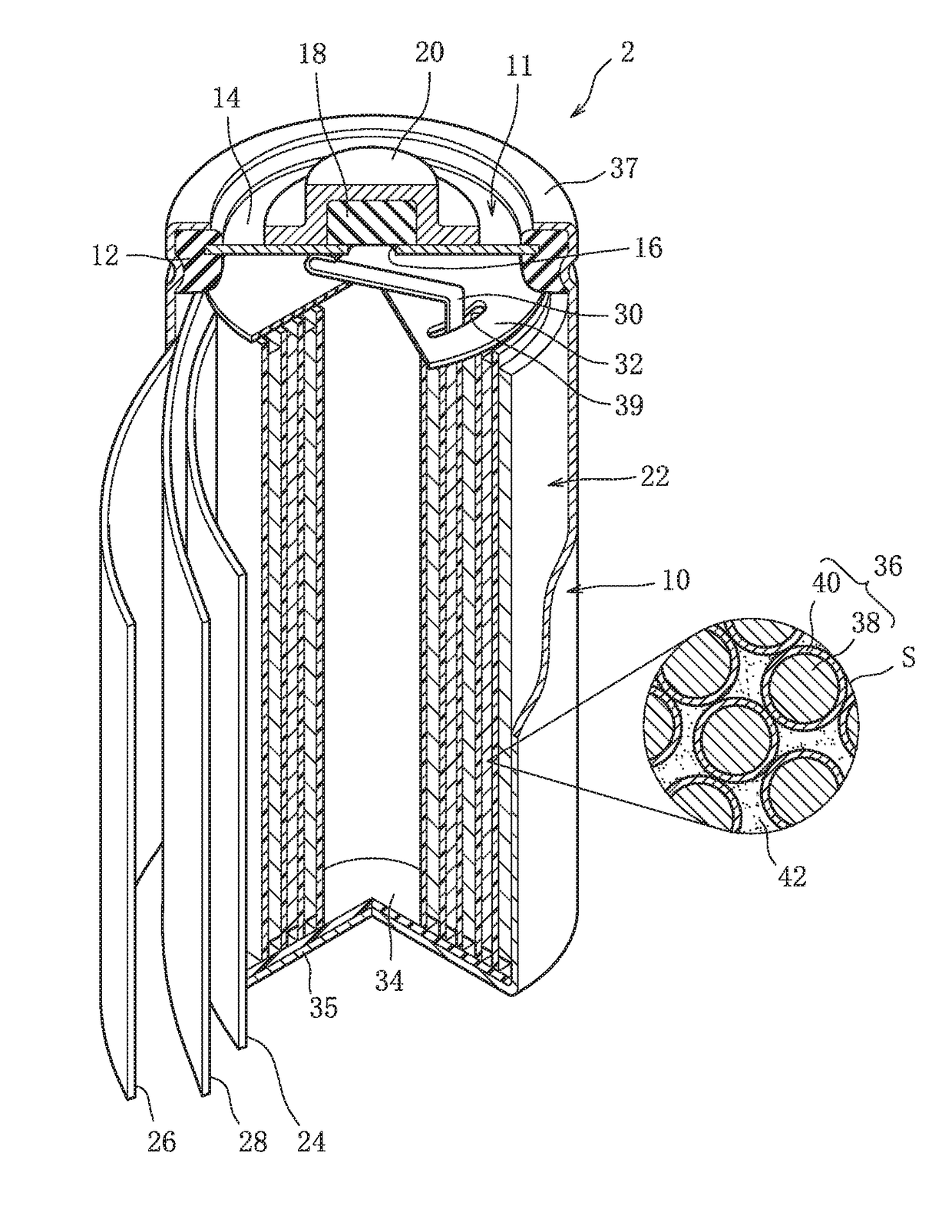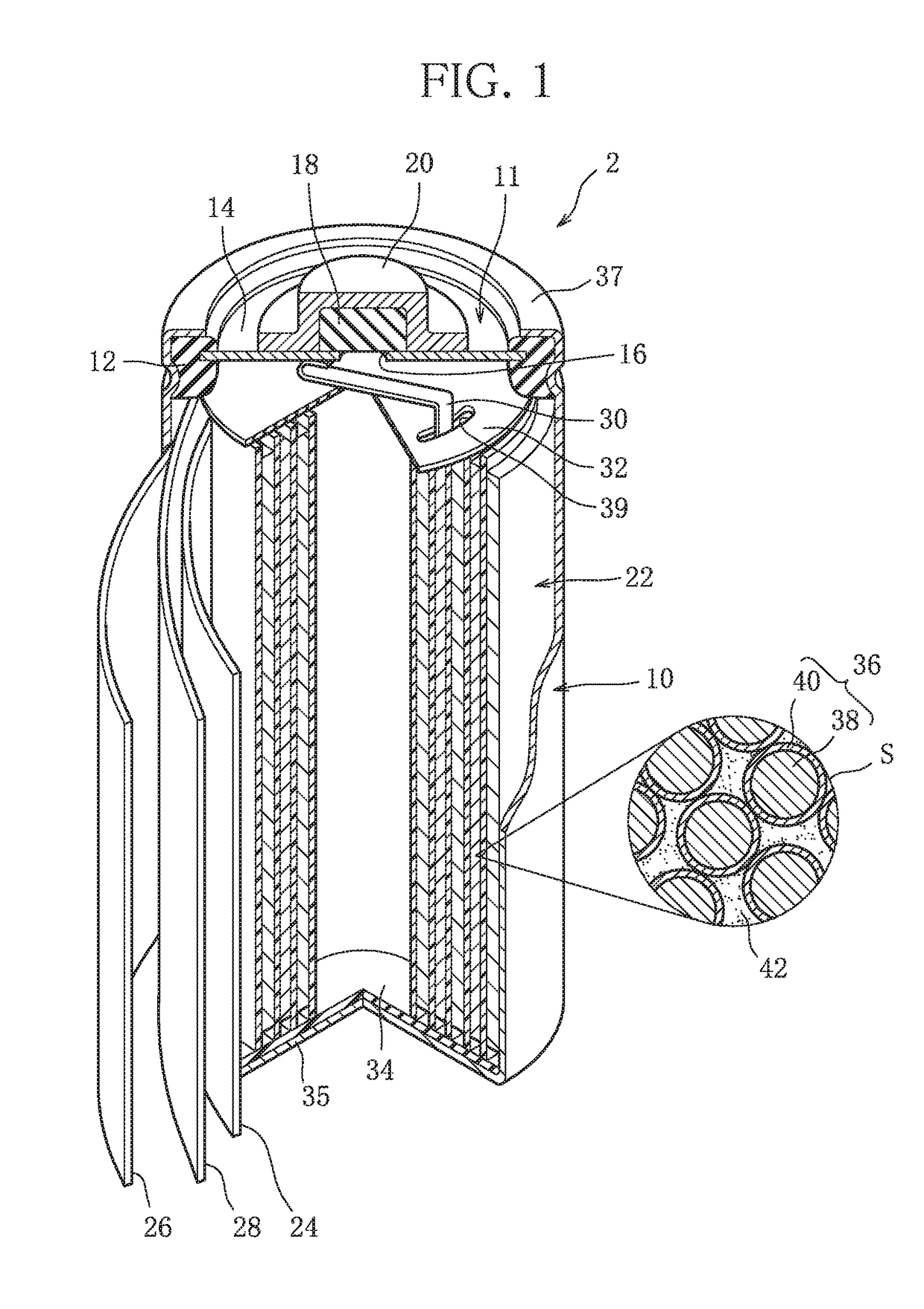Positive electrode active material for nickel-hydrogen secondary battery, nickel-hydrogen secondary battery including the positive electrode active material, and method of evaluating positive electrode active material
a technology nickelhydrogen secondary battery, which is applied in the direction of cell components, electrochemical generators, and nickel hydroxide when used alone, can solve the problems of battery deterioration in charge receiving performance, difficulty in increasing the utilization rate of positive electrode active material, and low conductivity of nickel hydroxid
- Summary
- Abstract
- Description
- Claims
- Application Information
AI Technical Summary
Benefits of technology
Problems solved by technology
Method used
Image
Examples
example 1
[0067](1) Production of Positive Electrode
[0068]Nickel sulfate, zinc sulfate and cobalt sulfate were weighed so that the proportions of zinc and cobalt relative to nickel were 4% by mass and 1% by mass, respectively, and these were added to a 1 N aqueous sodium hydroxide solution including an ammonium ion to prepare a mixed aqueous solution. While the resulting mixed aqueous solution was stirred, a 10 N aqueous sodium hydroxide solution was gradually added to and reacted with the mixed aqueous solution, and the pH in the reaction was here stabilized to 13 to 14 to produce a base particle 38 mainly including nickel hydroxide and including zinc and cobalt as solid solutions.
[0069]The resulting base particle 38 was washed with a 10-fold amount of pure water three times, and thereafter dehydrated and dried. Herein, the resulting base particle 38 was subjected to particle size measurement with a laser diffraction / scattering type particle size distribution measurement apparatus, and as a ...
example 2
[0085]A nickel-hydrogen secondary battery was produced in the same manner as in Example 1 except that the intermediate product particle was circulated by convection in air including oxygen under an environment of 80° C., sprayed by a 12 N aqueous sodium hydroxide and a 4 N aqueous lithium hydroxide solution, and subjected to a heat treatment for 45 minutes to thereby form a conductive layer 40 in which cobalt hydroxide on the surface of the intermediate product particle was converted to cobalt oxyhydroxide and also sodium and lithium were incorporated in a layer of the cobalt oxyhydroxide, and which included a cobalt compound containing sodium and lithium.
PUM
| Property | Measurement | Unit |
|---|---|---|
| particle size | aaaaa | aaaaa |
| particle size | aaaaa | aaaaa |
| particle size | aaaaa | aaaaa |
Abstract
Description
Claims
Application Information
 Login to View More
Login to View More - R&D
- Intellectual Property
- Life Sciences
- Materials
- Tech Scout
- Unparalleled Data Quality
- Higher Quality Content
- 60% Fewer Hallucinations
Browse by: Latest US Patents, China's latest patents, Technical Efficacy Thesaurus, Application Domain, Technology Topic, Popular Technical Reports.
© 2025 PatSnap. All rights reserved.Legal|Privacy policy|Modern Slavery Act Transparency Statement|Sitemap|About US| Contact US: help@patsnap.com



